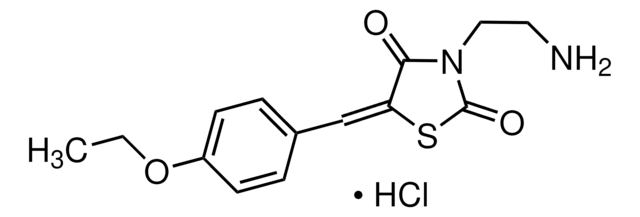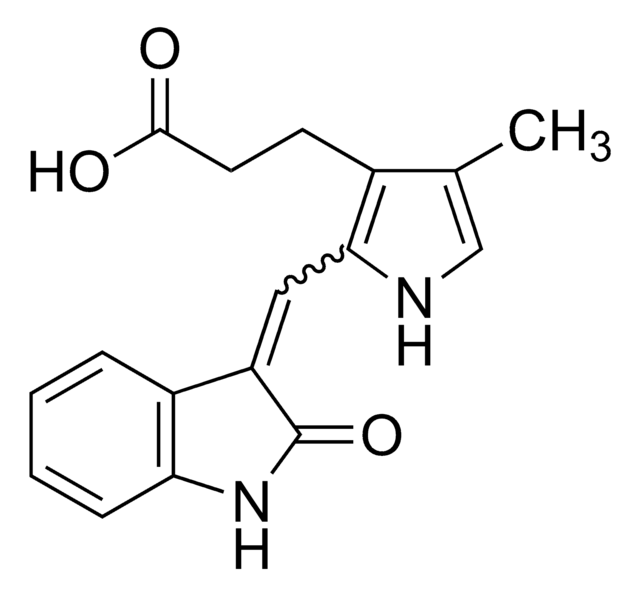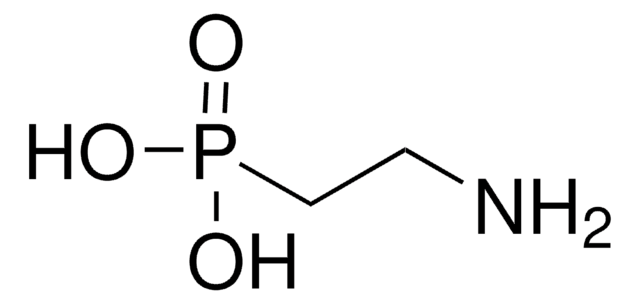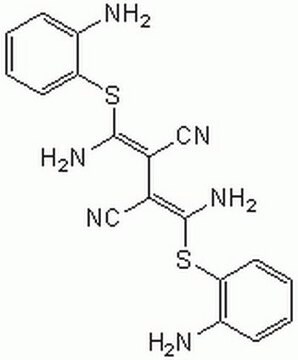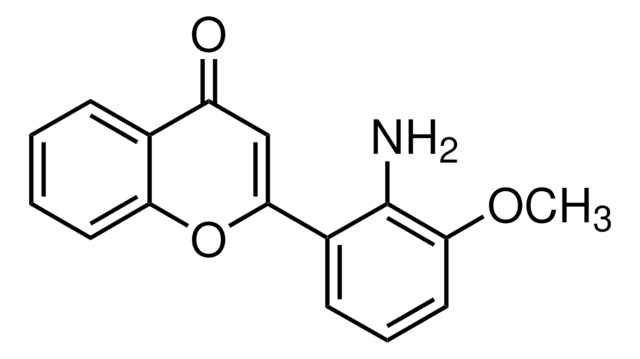SML0320
FR180204
≥98% (HPLC)
Synonym(e):
5-(2-Phenyl-pyrazolo[1,5-a]pyridin-3-yl)-1H-pyrazolo[3,4-c]pyridazin-3-ylamine, 5-(2-Phenylpyrazolo[1,5-a]pyridin-3-yl)-1H-pyrazolo[3,4-c]pyridazin-3-amine, FR 180204
About This Item
Empfohlene Produkte
Qualitätsniveau
Assay
≥98% (HPLC)
Form
powder
Farbe
faintly yellow to dark yellow
Löslichkeit
DMSO: ≥10 mg/mL
Lagertemp.
2-8°C
SMILES String
Nc1n[nH]c2nnc(cc12)-c3c(nn4ccccc34)-c5ccccc5
InChI
1S/C18H13N7/c19-17-12-10-13(20-22-18(12)23-21-17)15-14-8-4-5-9-25(14)24-16(15)11-6-2-1-3-7-11/h1-10H,(H3,19,21,22,23)
InChIKey
XVECMUKVOMUNLE-UHFFFAOYSA-N
Anwendung
- to block extracellular-signal-regulated kinase (ERK) in order to validate whether homeobox B7 (HOXB7) regulates the migration and proliferation process via AKT/mitogen-activated protein kinases (MAPK) signaling
- of extracellular-signal-regulated kinase (ERK) to study the effects of signaling pathway inhibitors on differentiation and cell traction stress
- to determine if phosphorylation of this signaling protein is essential for mesenchymal stromal cell (MSC) derived therapeutic efficacy
Biochem./physiol. Wirkung
Leistungsmerkmale und Vorteile
Lagerklassenschlüssel
11 - Combustible Solids
WGK
WGK 3
Flammpunkt (°F)
Not applicable
Flammpunkt (°C)
Not applicable
Analysenzertifikate (COA)
Suchen Sie nach Analysenzertifikate (COA), indem Sie die Lot-/Chargennummer des Produkts eingeben. Lot- und Chargennummern sind auf dem Produktetikett hinter den Wörtern ‘Lot’ oder ‘Batch’ (Lot oder Charge) zu finden.
Besitzen Sie dieses Produkt bereits?
In der Dokumentenbibliothek finden Sie die Dokumentation zu den Produkten, die Sie kürzlich erworben haben.
Kunden haben sich ebenfalls angesehen
Artikel
The mitogen-activated protein kinase (MAPK) family consists of both stress activated (SAPK) and mitogen-activated (MAPK) protein kinases. They form a network of signal transduction cascades that mediate cellular responses to a diverse range of stimuli, including growth factors, chemical or osmotic stress, irradiation, bacterial infection and proinflammatory cytokines.
Unser Team von Wissenschaftlern verfügt über Erfahrung in allen Forschungsbereichen einschließlich Life Science, Materialwissenschaften, chemischer Synthese, Chromatographie, Analytik und vielen mehr..
Setzen Sie sich mit dem technischen Dienst in Verbindung.
